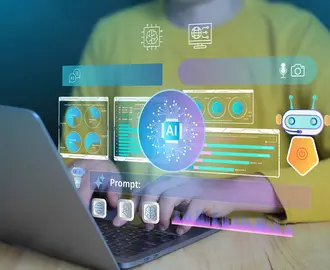Credit: Mimi Phan
Can sustainable investing save the world? director of the MIT Sloan Sustainability Initiative, thinks so — with three caveats.
In a March 2021 talk, part of the MIT Impact Investing Initiative spring speaker series, Jay laid out the case for sustainable investing and outlined three major challenges.
Sustainable investing is at a tipping point, said the MIT Sloan senior lecturer.
“What’s been happening over the last 20 years — and really accelerating over the last five years — is that investors are starting to consider the social and environmental impacts of companies as being important to their own return,” Jay said. “Capital markets are moving very fast to try to incorporate social and environmental performance into the way companies are valued and the way that investors take action.”
However, there are three obstacles standing in the way of that momentum:
Hurdle 1: Misalignment in the investor community
“Big asset owners who shape the markets are complicated beasts — they’re organizations or multiple family members who, across generations, might have different perspectives, and we know that younger generations are more concerned about social environmental issues,” he explained.
The same is true within pension funds or endowments, with multiple stakeholders who have various priorities. A key issue going forward will be how to align social priorities with those various investment objectives. Will organizations be willing to take more risk or less return to achieve greater impact?
“There are different beliefs about whether it’s possible to break these tradeoffs, and there’s a whole set of conversations that have to happen within asset-owning organizations before there’s really consistent action and consistent voice from the investor community that would shape the business world,” he said.
Hurdle 2: Outdated or inaccurate ‘mental models’
Assuming stakeholders are aligned on wanting to use their money for social causes while making a good return in the process, a bigger problem emerges: How to do it. Jay is concerned that people’s perceptions — or mental models — about how investment actions can affect change are inaccurate. Common mental models include “anything I do as an investor affects anything a company does” and “If I want to make a better world, I should just sell bad stocks and buy good ones,” he said.
These beliefs are false.
“If you look at the data, unless you’re a very prominent, highly symbolic institution like the Rockefeller Family Fund or the Harvard Endowment, divesting from a stock doesn’t really change anything about how that company is going to behave. Conversely, if I buy a stock in a company like Tesla, it doesn’t really change the way that company behaves, either,” he said.
Jay said that change comes more consistently from owning stock and participating in shareholder engagement that pushes management to change their behavior.
“Our colleague Julian Kölbel and colleagues’ literature review suggests that owning and engaging is actually more impactful than exiting or divesting,” he said.
Also impactful? Providing capital to things that no one else would — “things like very early stage financing of climate technology, or angel investing, or micro-financing community entrepreneurs,” he said.
Related Articles
However, even if investors are properly focused on shareholder engagement and providing additive capital, it’s essential to think carefully about the system you hope to influence. Take climate change. Many people might look to solar panels or renewable energy as solutions. That’s only half the battle, Jay said. It’s also important to work to reduce harmful forces.
“Building a nuclear station or a solar field doesn’t automatically shut down a coal plant. You could be running both of them at the same time. It turns out that investment actions that stop new coal plants, that shut down coal mines, that make our infrastructure more energy efficient so that it uses less energy and stops burning those fossil fuels now, those are much more bang for the buck. They’re much higher leverage,” Jay explained.
For example, investment in services and technologies for weatherization of low-income housing can create a triple benefit — financially, socially, and environmentally.
He laid out a helpful new mental model for investors: Think of the problem like an overflowing bathtub. You need to both open up the drain and turn off the faucet to solve the problem.
In the case of climate, “By planting trees, I’m opening up the drain — but if I’m still gushing the faucet of burning fossil fuels, the sink is still going to keep filling up.”
What’s needed, Jay said, are interactive simulation tools like En-ROADS (which was developed in conjunction with the MIT Sloan Sustainability Initiative) that help people refine their mental models and build smarter intuitions.
Hurdle 3: Inconsistent measurement
It’s essential to measure success and progress, but this can be a huge challenge, Jay said, due to faulty reporting and rating agencies with methodologies that are noisy and opaque.
“There is not quality data that’s consistent about how firms are doing on sustainability,” he said.
Why? One, there’s not consistency in the reporting or the gathering of data about firms’ ethical behavior or environmental, social, and governance (ESG) data. Different companies are reporting this information in different ways, and with different levels of rigor.
ESG rating agencies aggregate this information to produce ratings and rankings, but have massive disagreement even on past behavior and present policy, let alone future behavior. Moreover, investors are expecting companies to work toward many goals at once.
“We’re simultaneously asking companies to work on gender equity, racial justice, worker safety, climate change, water pollution and lobbying, and engagement with the government. It turns out to be extremely difficult to create some sort of composite score for a sustainable company while we’re trying to aggregate all of these different types of information,” Jay said. “We end up with what we call aggregate confusion, which is problematic.”
Solutions
Jay and colleagues are working toward solutions for each of these three challenges, including Owning Impact, an executive course that helps family foundations build socially aware investing strategies; the Climate Pathways Project, which helps top decision-makers adopt evidence-based climate policy; and the Aggregate Confusion Project, which helps companies assess sustainability performance.
He's cautiously optimistic about the future.
“I think the alignment question is going to be ongoing, because as technology advances, some things that were not profitable become profitable … And it’s going to keep changing as this millennial generation comes into its own in the management of the investment firms and the governance of the family wealth,” Jay said.
He's sanguine about mental models, as activist investing and investor engagement become more visible. Case in point: Engine 1, activist climate investors, recently ousted two members of ExxonMobil’s board.
As for measurement, “We’re [also] going to see more public policy that requires firms and investors to do climate risk measurement and management, which is going to make all of these risks more visible,” he said. “Gradually, we can get to a place where the capital markets are able to reward firms for ethical behavior and deal with social and environmental harm, but there is a lot of work to do.”



